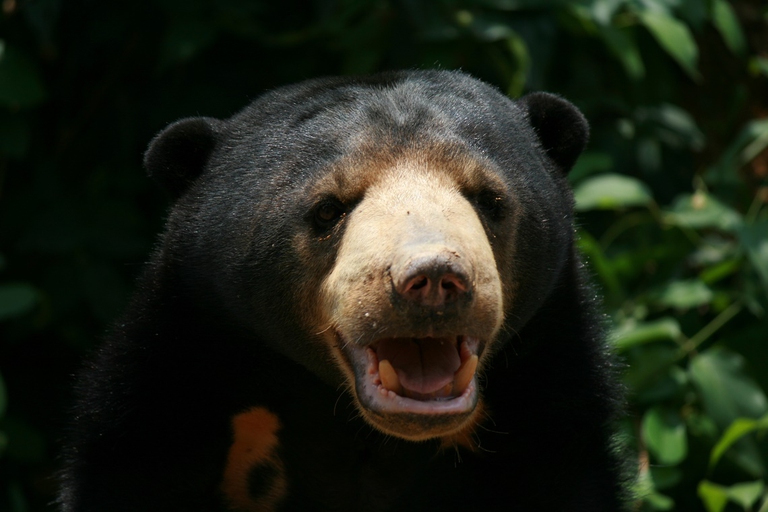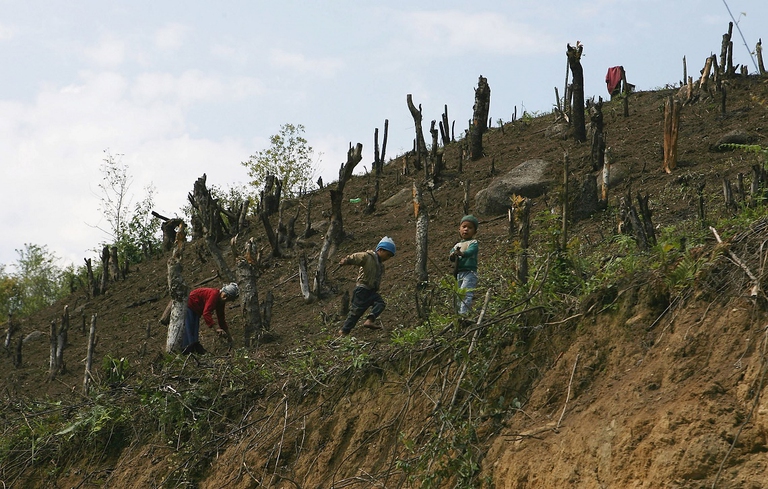
The Amazon became an alternative classroom during the pandemic. Now, the educational forest in Batraja, Bolivia, lives on to teach children and adults the value of nature.
Grazie alle fototrappole dell’Istituto Oikos è stata confermata la presenza dell’orso malese nelle foreste del Myanmar.
The forests of Southeast Asia are home to the smallest species of bear, the sun bear (Helarctos malayanus), named after the distinctive U-shaped yellowish spot on their chest. Despite the lack of an accurate estimate of how many individuals survive in the wild, sun bears are listed as vulnerable by the IUCN as they’re threatened by human-related activities. The sun bear has been declared extinct in Singapore and, according to recent researches, also in Bangladesh and China. Fortunately, this long-tongued plantigrade animal still roams wild in Myanmar’s forests, as confirmed by camera traps of the Oikos Institute.
The video features a sun bear rubbing against a tree, a gesture usually made to mark their territory and signalling their presence to other bears. The extraordinary images have been grabbed in the forests of Rakhine, north-west Myanmar, under the Conservation of Sun Bear in Myanmar project, promoted by the NGO Oikos Institue and sponsored by Fondazione Segré.
This is the first systematic study to be conducted in the forests of Rakhine – an area still little known to scientists. 120 camera traps have been installed in the area, as they’re crucial to discover wildlife populating the area. “Camera traps are widely used to monitor wild animals,” explaines Filippo Zibordi, zoologist of the Oikos Institute and head of activities. “They allow spotting bears, figuring out their gender and making estimates on their population and the areas they populate”.
The survival of sun bears is threatened by habitat loss, as the forests they live in are cleared by the logging industry and to make space to oil palm plantations. Besides deforestation, the illegal wildlife trade is contributing to decimating the species, which numbers dropped by 30 per cent over the past 30 years. Sun bears are poached for their meat and for body parts used in the Chinese traditional medicine, such as gallbladder.
The aim of the Conservation of Sun Bear in Myanmar project, set to end in 2020, is protecting the habitat of sun bears through initiatives of a sustainable and communitarian management of forests, and reducing human-animal conflicts through raising awareness activities for local communities.
Siamo anche su WhatsApp. Segui il canale ufficiale LifeGate per restare aggiornata, aggiornato sulle ultime notizie e sulle nostre attività.
![]()
Quest'opera è distribuita con Licenza Creative Commons Attribuzione - Non commerciale - Non opere derivate 4.0 Internazionale.
The Amazon became an alternative classroom during the pandemic. Now, the educational forest in Batraja, Bolivia, lives on to teach children and adults the value of nature.
Our species took its first steps in a world covered in trees. Today, forests offer us sustenance, shelter, and clean the air that we breathe.
Bangladesh suffered widespread damage as a result of Cyclone Amphan. Yet the Sundarbans mangrove forest acted as a natural barrier protecting the country from further destruction, as it has done countless times before.
On top of a 2.4 million dollar compensation, the indigenous Ashaninka people will receive an official apology from the companies who deforested their lands in the 1980s.
The tapir was reintroduced into Brazil’s Atlantic Forest, the country’s most at-risk ecosystem. The species can play a key role in the forest’s recovery.
Forests are home to 80 per cent of the world’s terrestrial biodiversity. This year’s International Day of Forests highlights the urgent changes needed to save them.
After a legal battle that lasted two years, Indonesia’s Supreme Court has revoked the permit to mine for coal in the forests of South Kalimantan in Borneo.
The list of human and animal victims of the Australia wildfires keeps growing – one species might already have gone extinct – as the smoke even reaches South America.
Areas where the FARC guerrilla used to hold power in Colombia have faced record deforestation. Farmers cut down trees, burn land and plant grass for cows. Because, “what else can we do for a living here in the Colombian Amazon”? An intimate report from the heart of the felled forest in Caquetá.









